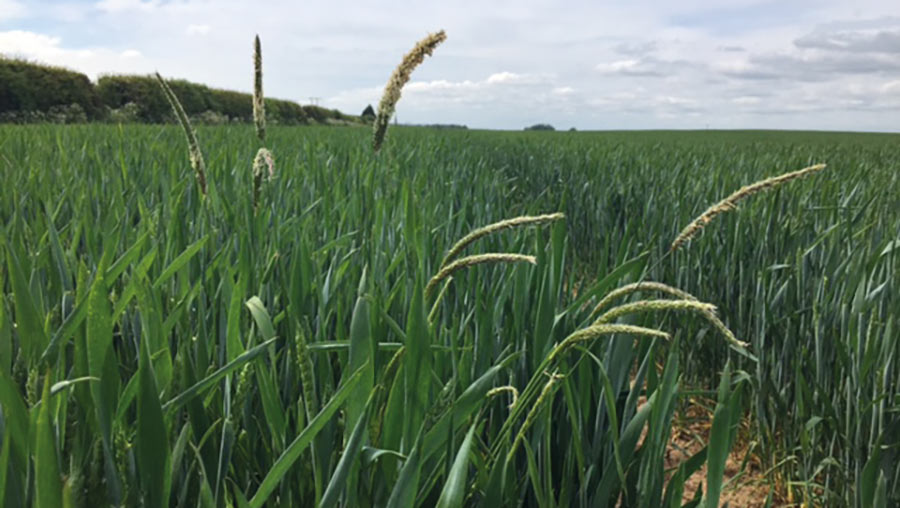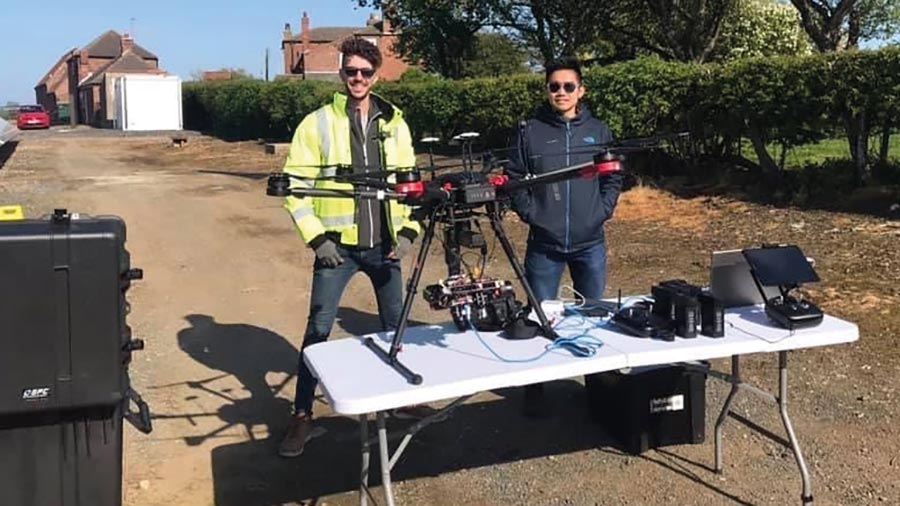Researchers on a mission to wipe out blackgrass with novel tech
 © Claire L Robinson
© Claire L Robinson
Researchers from the University of Hull are assessing the financial and environmental impact of blackgrass through a series of farmer projects that include cost and carbon mapping and multi-spectral weed imaging.
After a successful preliminary year working with five farms in the Humber region, the University is on the hunt for additional growers across the UK to scale up the research project.
See also: Scientists trial eDNA technology to quantify viable blackgrass seeds
The aim is to help farmers mitigate and eradicate blackgrass using novel technology.
The three main areas of research are:
- Project 1 – Map the current carbon footprint and cost per year of managing blackgrass on arable farms
- Project 2 – Remote monitoring of blackgrass populations using multi-spectral technology
- Project 3 – Understand the key variables influencing blackgrass growth such as soil type, moisture and organic matter.
Cost and carbon mapping
Sarah Shaw, senior lecturer and researcher at the University of Hull Business School, explains how the team developed a unique tool to accurately map the financial and environmental impact of blackgrass across trial farms in the East Riding of Yorkshire.
This tool can be applied to map the entire (Scope 3) carbon emissions of UK agricultural supply chains.
“We looked at the cost and carbon footprint associated with each farm’s blackgrass interventions across a year’s growing cycle for a crop of winter wheat. This included chemical treatment and diesel use,” Dr Shaw explains.
The average cost of blackgrass intervention totalled £112/ha with a carbon footprint of 118kg carbon dioxide equivalents/ha across the five farms.
Dr Shaw continues that the pre-emergence stage was found to be the biggest contributor of carbon emissions.
This was the most carbon-intensive and costly stage because of the huge reliance on chemicals applied to combat blackgrass.
“Farmers are already doing a brilliant job of altering their practices to manage the weed, including spring cropping, but we need game-changing research from other disciplines to address the problem.
“We need to find real solutions in order to help reduce this financial burden, which the project aims to find.”
Multi-spatial weed imaging
With this in mind, the university developed camera technology to accurately distinguish between blackgrass and cereals during its early growth stages – when it is nearly impossible to for the human eye to see.
Multi-spatial and temporal spectral cameras were mounted on a drone to identify and monitor blackgrass. This clearly identified blackgrass to an accuracy of 85-95% during 1-26 weeks of its growth cycle.
“The 1-26 week phase is a critical timing for farmers to tackle blackgrass because costs and carbon footprint are at its highest. By using this information growers can locate problem areas and use a more targeted control approach.
“What’s more, the multi-spectral approach we adopted, which incorporates the thermal infrared wavelength, offers potential to provide information on both soil and plant health, helping to optimise fertiliser and herbicide application ” says Dr Shaw.

The M600 drone monitors blackgrass © Claire L Robinson
Next steps
The team continue to work on the project and are looking for further growers to expand their research across the whole of the UK.
They also plan to explore a new blackgrass soil seed contamination index.
This will involve a soil sampling service to test occurrence of viable weed seeds in the seed bank, giving farmers practical knowledge and solutions on how to manage weed populations.
For further information and how to get involved, please contact j.bishop@hull.ac.uk
What one trial farmer has to say
Rob Meadley, East Yorkshire farmer and agricultural consultant at Brown & Co, notes the challenges of managing the invasive grassweed and how insight from the University of Hull helped further his understanding.
“It is a great experience to be involved with a leading research team where your day-to-day knowledge can be looked at and questioned in different ways.
“It allowed me to think much more widely regarding early identification and potential ways to deal with the weed. I look forward to continued involvement with the team.”

